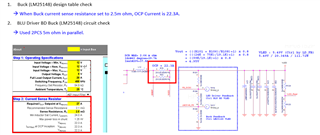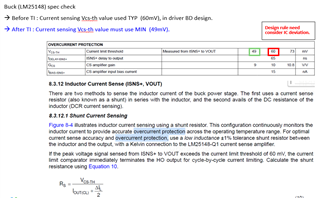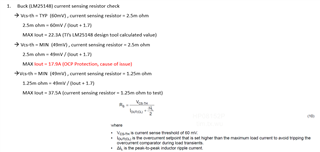Other Parts Discussed in Thread: LM25148
Tool/software:
Hi team,
Customer RD is facing the wrong calculation result on LM25148. Per actually test on system, they found it should be using minimum value to calculate the required Rsense to prevent the OCP error triggering. Please check and consider to modify the design tool we publish online. Thanks.
FYI



Regards,
Alex

